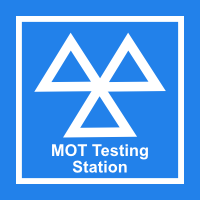Tyre markings explained
What do marks on tyres mean?
The markings on your tyre sidewall (various codes and numbers) are how you can identify valuable information about your tyre. This includes tyre size, speed rating, load index, manufacturer and more.
If you’re in the market for new tyres, it can be helpful to understand tyre markings, as this will help you make a more informed decision. We’ll break down what each tyre marking means.
The first three digits indicate the tyre width in millimetres. For example, a tyre marked 215 will measure 215 mm across the tread from sidewall to sidewall.
The fourth and fifth digits indicate the aspect ratio, otherwise known as the profile height of the tyre sidewall. An aspect ratio of 55 means the profile height is 55 percent of the tyre’s width.
The letter ‘R’ indicates that it’s a radial tyre, which means the cord plies are placed at a 90-degree angle to the direction of travel, giving the tyre additional strength. Radial tyres are the most manufactured type of tyre today.
The final two digits represent the wheel rim size that the tyre fits. It’s also the diameter from bead to bead. A tyre marked 16 will fit on a 16-inch wheel rim.
To summarise, 215/55R16 translates to:
215: 225 mm wide from sidewall to sidewall.
55: The profile height is 55% of the tyre width.
R: It’s a radial tyre.
16: The wheel rim size it can be fitted to (in inches).
Speed rating and load index
The majority of tyres carry coded markings on them, which correspond to their load carrying and maximum speed capabilities.
For example: 91V91= Index of maximum load carrying capacity per tyre, in this case equates to 615 kg.
V= Symbol which equates to a speed rating of 240 km/h (approximately 149 mph)
The load index is a numerical code, which corresponds to the maximum load a tyre can carry at the speed indicated by its speed symbol, under specific service conditions. The speed symbol indicates the speed at which the tyre can carry the load corresponding with its load index.
Tyre manufacture date
The tyre manufacturer includes details about the time and place of production on the tyre. This information is represented by a series of letters and numbers that look something like DOTXXXXXXXX1017.
The final four digits indicate the date of manufacture, so you can determine how old your tyre is. For instance, if the date code is 1623, the tyre was made in the 16th week of 2023.
Reinforced tyres
Tyres with an increased load index often have markings to indicate they have been reinforced to handle extra weight. These are known as XL or Extra Load tyres. They are vital if your vehicle carries heavy loads.
This varies from one vehicle manufacturer to the next, but look out for symbols such as:
- XL Extra Load.
- EXLExtra Load.
- RF Reinforced.
- REINF Reinforced.
- RFD Reinforced.
Run flat tyres
Run-flat tyres have additional reinforcement that enables drivers to keep driving even after experiencing a puncture, blowout, or pressure loss. The tyres are designed to be puncture-proof. This helps drivers get to their nearest garage or service centre rather than waiting on roadside assistance.
These tyres have clear, run-flat tyre markings. This may appear as follows:
- ROF.
- EMT.
- RFT.
- ZP.
- SSR.
- DSST.



















